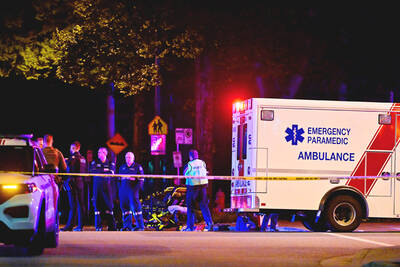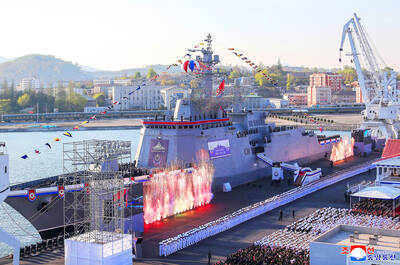Bloodied and battered, the wounded arrive daily at the emergency room here, the casualties of weeks of protests against gun-toting Indian police and security forces that spill even into the hospital corridors.
On a day late last month, three patients — Habibullah Tiploo; his teenage daughter, Sumaira; and his daughter-in-law, Fatima — were the first to arrive. The family says Tiploo was shot by security forces outside his home; as Fatima and Sumaira, 17, rushed to his aid, they were fired upon, too.
According to a police statement, protesters were lobbing stones at a nearby bunker and the three Tiploos were wounded when the police retaliated with bullets. The family denies being part of any protest.
Protesters swarmed into the emergency room with them, struggling with doctors in surgical aprons and masks to force their way into the operating room. Some slipped past, took over Fatima’s hospital bed and wheeled it to the X-ray room as they chanted the same slogans that have filled the streets, angry words echoing off the walls and drowning out the wails of grieving friends and relatives.
“The Kashmir which we have irrigated with our blood — that Kashmir is ours!” they chanted.
The melee was common enough at the hospital, the Sher-i-Kashmir Institute of Medical Sciences, where more than 500 patients have come in with bullet wounds, lacerations and bruises in the past three months.
They are often carried by scores of protesters, who take the turmoil of the streets into the hospital with them, making the emergency room a miniature of Kashmir’s conflict and a window on the ways it has overturned the lives of just about every Kashmiri, irrespective of class or professional status.
The staff members at the Srinagar hospital have been dealing with such scenes on a regular basis since June 11, when thousands of demonstrators took to the streets to protest the death of Tufail Mattoo, a teenager who was hit by a tear gas canister.
The mass protests and subsequent response by security forces have left 65 civilians dead and countless injured, a casualty toll that has escalated in the past month. Last month alone, the hospital staff here received 345 patients as a result of the conflict, compared with roughly 150 during June and July combined.
The city is subjected to nearly continuous strikes by protesters agitating for independence for Kashmir, the prize of a tug of war between India and Pakistan, which have each held a part of the territory since their partition more than 60 years ago. The curfews called by the government to quell the demonstrations have effectively shut the city down.
For the hospital staff, the journey to work is a daily exercise in resourcefulness and courage. While the rest of the city sleeps, holes up in houses and stays away from windows that tend to be the targets of stones from protesters, the doctors and paramedical staffs of the Kashmir Valley’s hospitals must still report for duty.
Many doctors, who brave the gantlet either in their own cars or in hospital ambulances that serve as stealth commuter buses, complained of being caught in protesting mobs almost daily.
Some said they were not allowed to pass by protesters or security forces, even if they arrived in an ambulance, which the police had indicated should have kept them safe. The local news media have reported that some doctors on their way to work have been brutalized by police and security forces, or arrested.
Representatives for the police and other security forces deny ever obstructing any doctor or hospital staff member from arriving at work.
Shahida Mir, the principal of the Government Medical College in Srinagar and head of five associated hospitals, placed one of them, known as SMHS Hospital, under a state of emergency during the first week of last month, meaning it would perform only emergency surgery because of the influx of trauma patients. She, too, complained that her doctors were delayed, harassed or turned back by security forces when trying to get to work.
“They put up such a stern face, the doctors get scared,” she said of the security forces, which still number in the hundreds of thousands in Kashmir after many arrived in the 1990s to fight an insurgency that has since been mostly vanquished.
Farooq Ganie, a surgical resident, confessed that for the past two-and-a-half months, he had resided on campus at the institute, too afraid even to try the commute home. On a recent Saturday, he dared try it.
“They stopped me, and I showed them my ID card,” he said of the security forces. “I was so scared, I thought they would beat me, but they let me go.”
Abdul Maajid, a psychiatrist who witnessed the protests in the emergency room, explained that the younger generation of Kashmiris, those responsible for many of the protests, are the products of an environment with “acute chronic stressors.”
“They have not seen normal life,” he said.
His own upbringing in the valley, before the insurgency of the 1990s, was relatively peaceful.
“I have seen what normal life means,” he said. “For the last 20 years, I have seen the kids around. They have not seen the playground. They have not seen the normal recreational activities you expect them to do at their age.”
In recent days, the situation at the hospitals has grown less urgent as the administration has adapted to the conditions, and casualty numbers dwindle, but tensions remain and the effects of the curfews have deepened.
Pharmacies are running low on many routine medications because of a transportation shutdown in the valley, according to residents. Many family members of hospital patients whose homes lie outside Srinagar are having trouble getting food, and are being helped by local people who have donated and organized meals for the month of Ramadan.
Then there is the fear shared by so many Kashmiris, but one that particularly affects the hospital’s nurses, who are not allowed to live on campus and must brave the commute daily.
“It’s terrible to come here,” said Shazia Mohi-u-Din, a nurse. “It is stressful every day. When you leave the house, you don’t know if you’re coming back.”

Archeologists in Peru on Thursday said they found the 5,000-year-old remains of a noblewoman at the sacred city of Caral, revealing the important role played by women in the oldest center of civilization in the Americas. “What has been discovered corresponds to a woman who apparently had elevated status, an elite woman,” archeologist David Palomino said. The mummy was found in Aspero, a sacred site within the city of Caral that was a garbage dump for more than 30 years until becoming an archeological site in the 1990s. Palomino said the carefully preserved remains, dating to 3,000BC, contained skin, part of the

TRUMP EFFECT: The win capped one of the most dramatic turnarounds in Canadian political history after the Conservatives had led the Liberals by more than 20 points Canadian Prime Minister Mark Carney yesterday pledged to win US President Donald Trump’s trade war after winning Canada’s election and leading his Liberal Party to another term in power. Following a campaign dominated by Trump’s tariffs and annexation threats, Carney promised to chart “a new path forward” in a world “fundamentally changed” by a US that is newly hostile to free trade. “We are over the shock of the American betrayal, but we should never forget the lessons,” said Carney, who led the central banks of Canada and the UK before entering politics earlier this year. “We will win this trade war and

‘BODIES EVERYWHERE’: The incident occurred at a Filipino festival celebrating an anti-colonial leader, with the driver described as a ‘lone suspect’ known to police Canadian police arrested a man on Saturday after a car plowed into a street party in the western Canadian city of Vancouver, killing a number of people. Authorities said the incident happened shortly after 8pm in Vancouver’s Sunset on Fraser neighborhood as members of the Filipino community gathered to celebrate Lapu Lapu Day. The festival, which commemorates a Filipino anti-colonial leader from the 16th century, falls this year on the weekend before Canada’s election. A 30-year-old local man was arrested at the scene, Vancouver police wrote on X. The driver was a “lone suspect” known to police, a police spokesperson told journalists at the

North Korean leader Kim Jong-un has unveiled a new naval destroyer, claiming it as a significant advancement toward his goal of expanding the operational range and preemptive strike capabilities of his nuclear-armed military, state media said yesterday. North Korea’s state-run Korean Central News Agency (KCNA) said Kim attended the launching ceremony for the 5,000-tonne warship on Friday at the western port of Nampo. Kim framed the arms buildup as a response to perceived threats from the US and its allies in Asia, who have been expanding joint military exercises amid rising tensions over the North’s nuclear program. He added that the acquisition